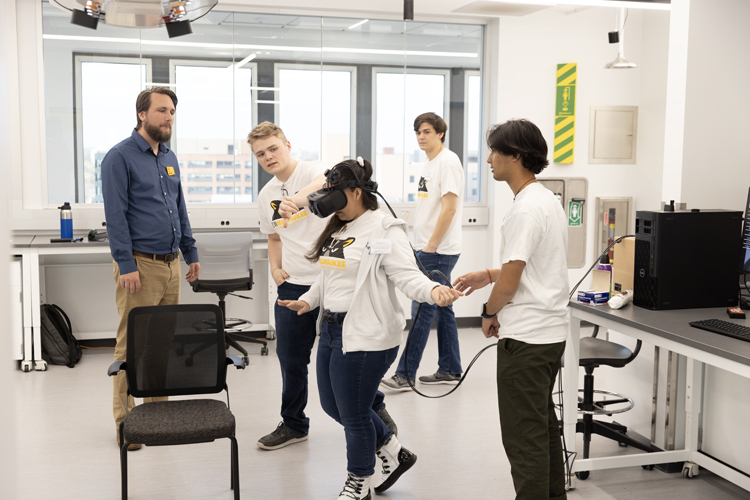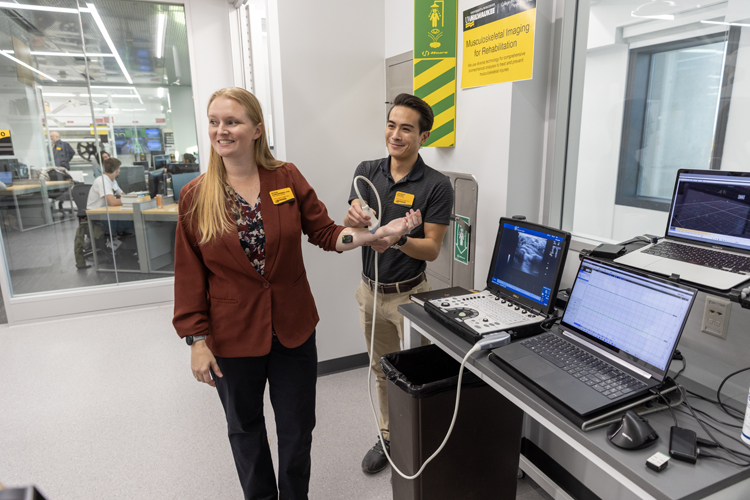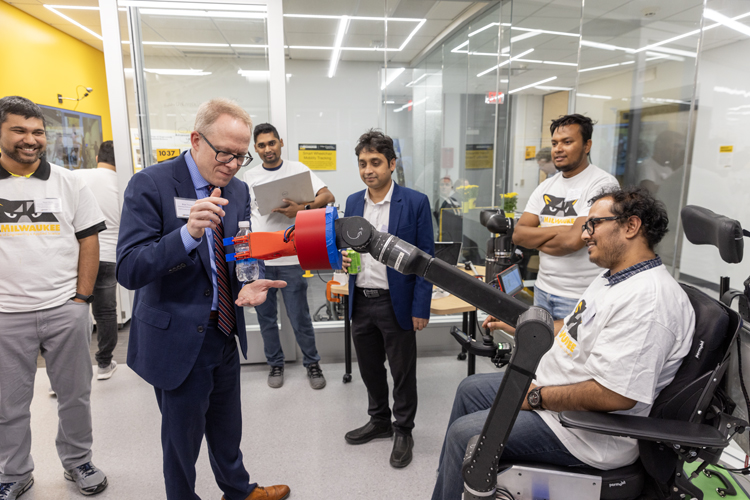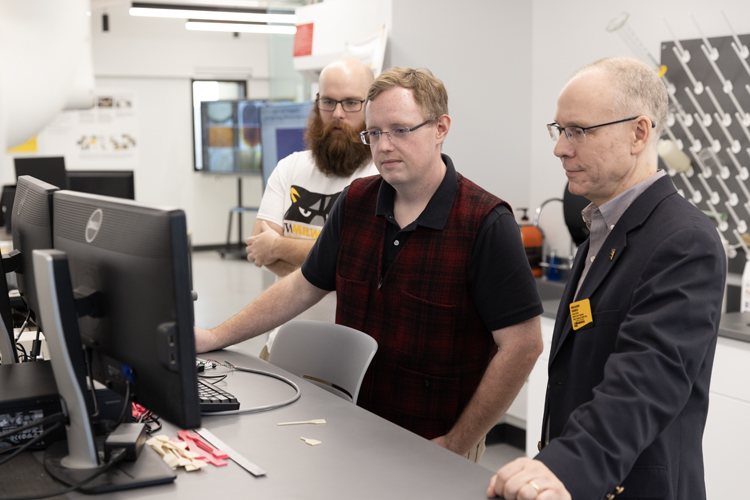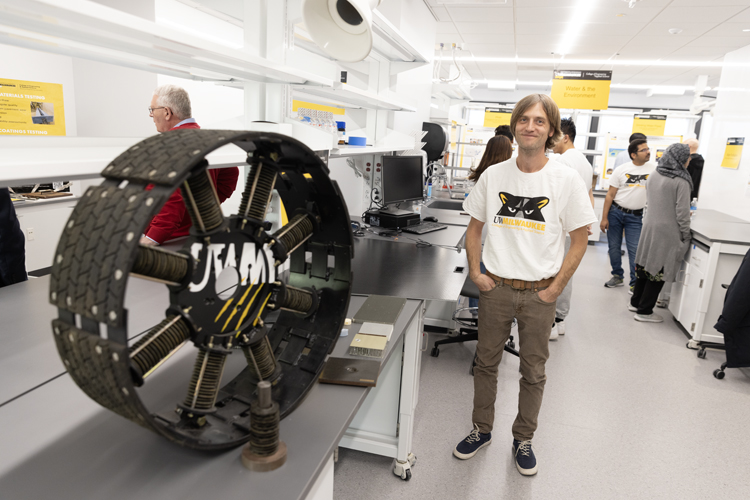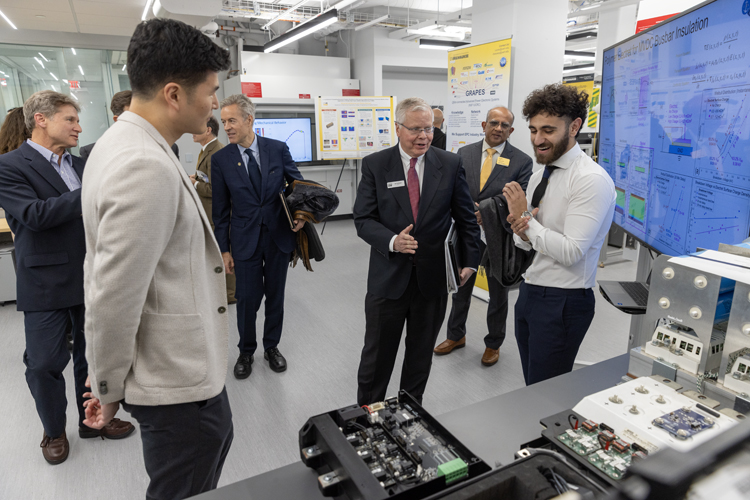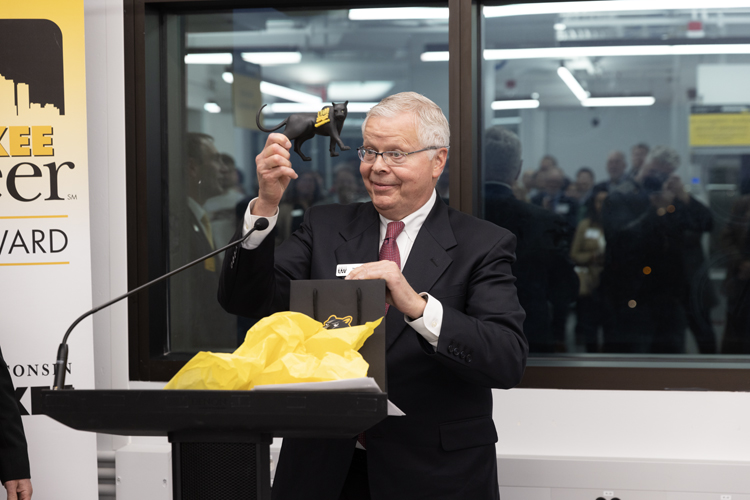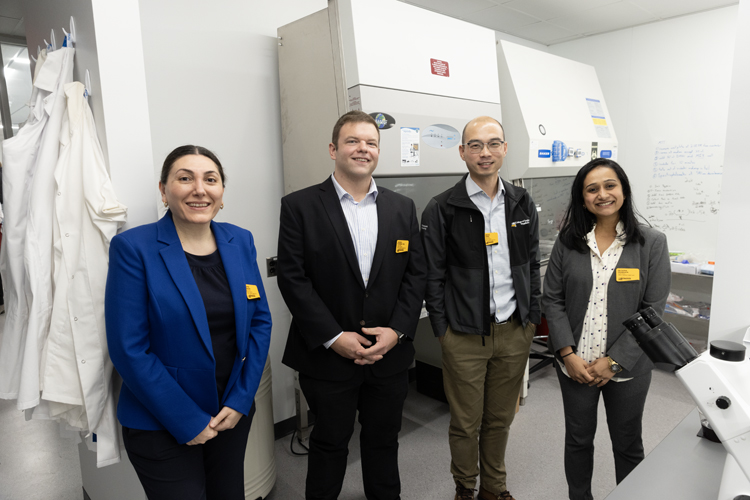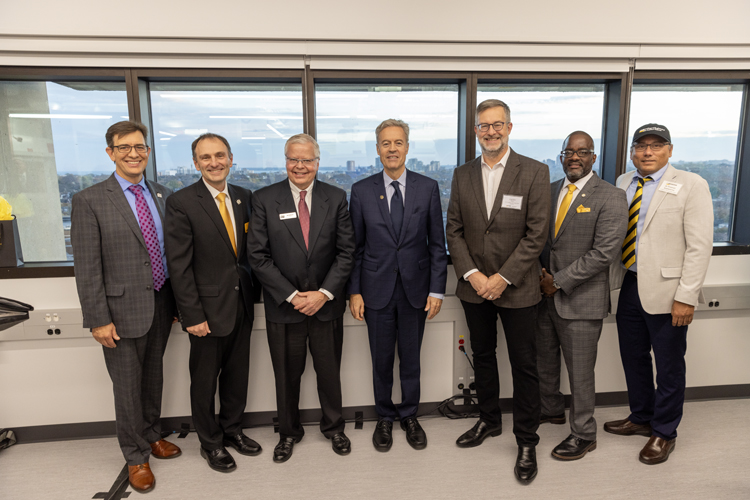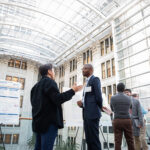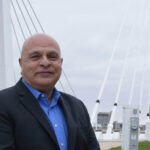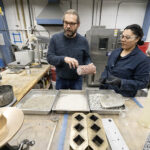When UWM’s Engineering & Mathematical Sciences building opened in 1971, many of its 13 floors were dark and segmented into individual rooms. The building houses the College of Engineering & Applied Science.
After a two-year renovation of the ninth and 10th floors, the new spaces, designated for research, are hardly recognizable. Moveable glass partitions replace many of the walls, and an entire bank of windows was added to the south-facing exterior wall, offering stunning views of Lake Michigan and downtown. And student workspaces link areas where research collaboration takes place.
When the building was designed, the internet and personal computers did not exist, Dean Brett Peters told a crowd of alumni, donors and businesspeople who attended the Nov. 2 grand re-opening of the floors.
“But, of course, tonight’s all about looking forward,” Peters said. “We wanted to show off the incredible transformation. But we’re also highlighting the research and the work that our faculty and students are doing in many different areas. It’s all about fostering collaboration.”
Universities of Wisconsin President Jay Rothman attended the event as part of his OpportUWnity Tour, a statewide journey Rothman is making to each UW campus this fall. The tour is meant to spark connections between the Universities of Wisconsin and businesses across the state.
And the new spaces, which came in under the $6.5 million state-funded budget, also were designed with industry partnering in mind. The college focuses on five research strength areas that support the local economy: advanced manufacturing, biomedical, transportation and infrastructure, water and environment, and energy and sustainability.
“UWM’s College of Engineering & Applied Science has a long history of industrial collaboration and research support,” Rothman said. “So, it’s especially important to me to see this collaboration today. At the Universities of Wisconsin, we are driven by our commitment to move forward in addressing the war for talent that we’re in. That war is real, and it is urgent.”
Meeting workforce needs is how the state will keep industry from moving elsewhere, he said. “We will win, and to do it, we need to make sure that we’re making adequate investments and making them in a way that advances the state.”
Chancellor Mark Mone thanked Rothman and the Universities of Wisconsin’s support and “fierce” advocacy on behalf of UWM, and he pointed to research as a major reason that businesses work with the university.
“When you add in the research component, it’s a powerful, powerful engine that drives the economy,” Mone said. “So it’s the research infrastructure that really makes collaboration happen.”
The interdisciplinary aspect of business in the real world is something students need to be familiar and comfortable with, said Craig Rigby, vice president for technology at Clarios and chair of the UWM Research Foundation.
“UWM has been the single best pipeline of talent that we have had in the engineering space over the last 15 to 17 years,” Rigby said. “There is an understanding of the interdisciplinary work requirement to actually deliver real things.
“It’s a testament to what this university has done in terms of delivering great quality graduates, and I think what we see here today is only going to make that even better.”
